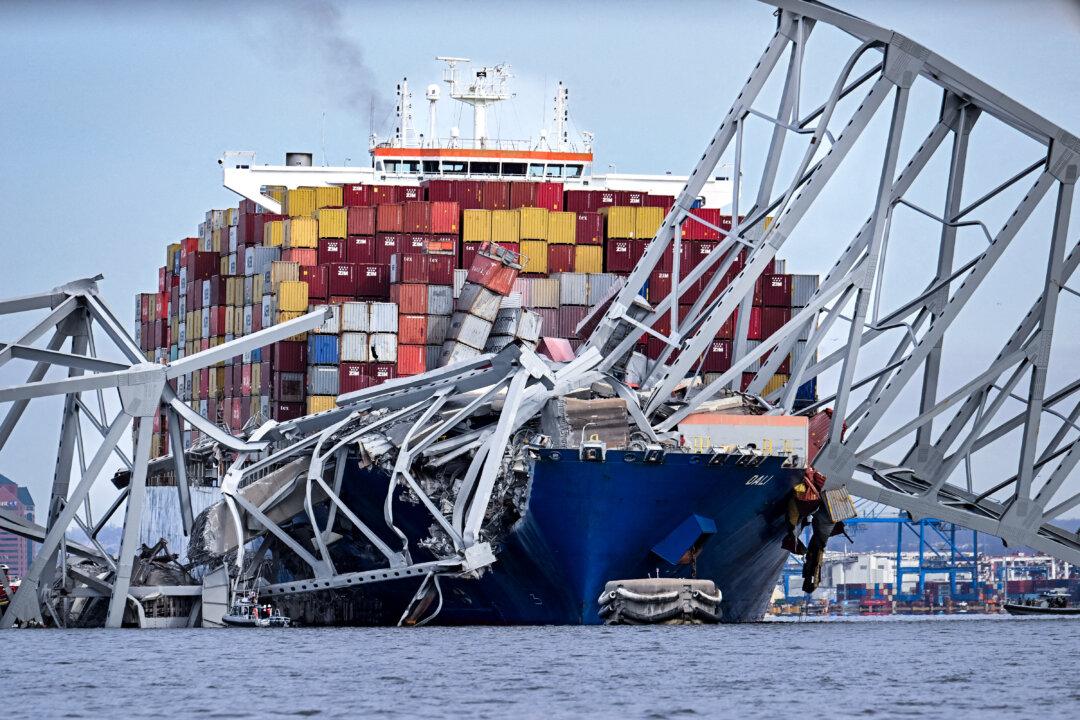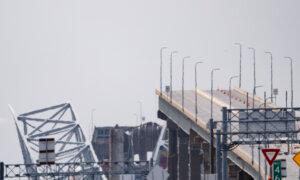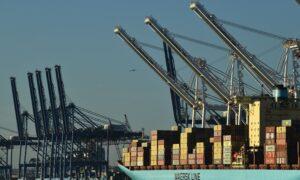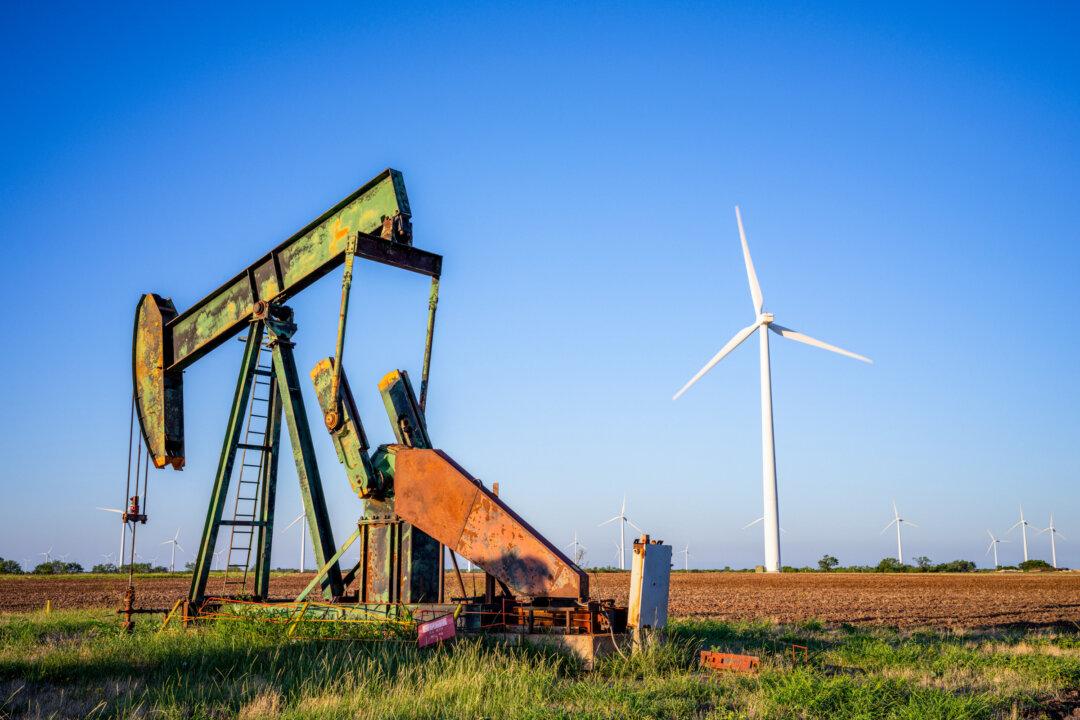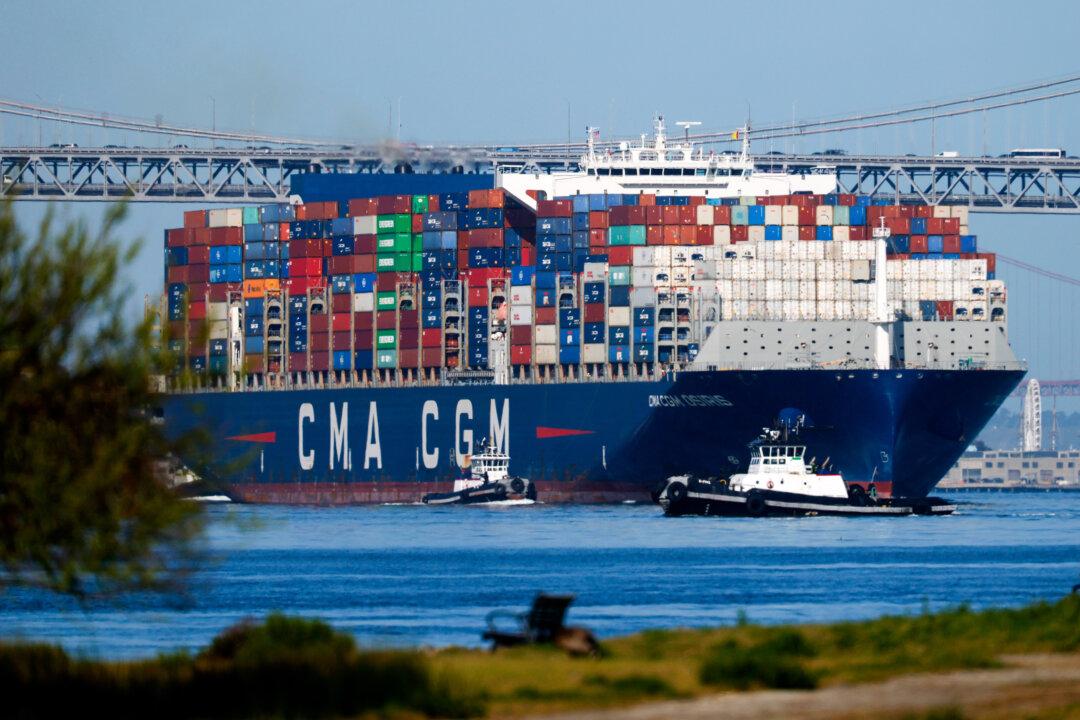The bridge was rammed and knocked down by a 95,000-ton, three-football field-long moving behemoth carrying up to 9,900 twenty-foot equivalent units (TEU) of container cargo—with each TEU weighing up to 28 tons.
Early reports indicate the 948-foot Singaporean-flagged container carrier Dali changed course and may have lost power after pulling out of Seagirt Martine Terminal near Point Breeze around 12:45 a.m. before ramming the bridge around 1:30 a.m.
The group in 2018 listed Francis Scott Key Bridge and others in Baltimore among those that may need to be elevated, or ship channels below them deepened, to accommodate ships that increasingly exceed 16,000 TEUs.
In addition to Baltimore, American ports where bridges pose navigational hazards to shipping—or ships pose existential hazards to bridges—include the ports of Newark, Charleston, Savannah, Jacksonville, Philadelphia, San Francisco, and “the north side terminals at Los Angeles,” the association maintains.
It cites New Jersey’s investment in raising the Bayonne Bridge “to allow taller ships to pass beneath” as an example of how ports are adjusting rather than “scheduling ships to sail under some bridges only at low tide.”
“The combination of rising sea levels and larger future container ships would likely require that the bridge across the Suez Canal also be raised to higher elevation,” it adds, documenting a global trend.
This reality was illustrated, ironically, only hours before the Baltimore ship-bridge collision during a Congressional tour of the Georgia Port Authority’s Garden City Terminal in the Port of Savannah.
Only two years after a 25-year, $937 million expansion deepened the port’s ship channel by 5 feet within the 40-mile lower Savannah River span that links it with the sea, ships larger than 8,200 TEUs cannot get under the Eugene Talmadge Bridge except at high tide, causing backlogs in getting dockside and delays that could force sea-transport operators to look for deeper waters.
Georgia officials are lobbying for a study to be included in the Fiscal Year 2025 (FY25) Water Resources Development Bill to gauge the impacts of expanding and deepening the waterway or raising the bridge.
The 2015-built Dali is a “post-panamax containership” built for Greek shipowner Oceanbulk by South Korea’s Hyundai Heavy Industries and, according to Lloyd’s List Intelligence data, had passed 21 routine port state control inspections without citation.
At 9,900 TEUs, it is now regarded as “mid-sized” even though many of the world’s ports—such as Savannah—are struggling to accommodate larger ships. Baltimore’s 50-foot deep ship channel is among those capable of handling the larger ships.
But as ships get larger and traffic increases, ports and bridges remain the same size.
The Dali’s encounter with the Francis Scott Key Bridge is not its first run-in with an immovable object while still in a port. In July 2016, it collided with a quay wall in Antwerp, Belgium, according to Vessel Finder, a vessel tracking website.
There were no injuries although the ship suffered some damage to its stern and berth and had to return dockside for repairs.
